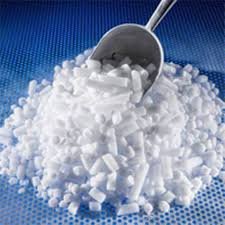Dry ice pellets, made from solid carbon dioxide (CO₂), are widely used in various industries for refrigeration, food preservation, and creating fog effects for events. While they offer numerous benefits, handling dry ice comes with inherent risks. Understanding Dry ice pellets and following essential safety precautions is crucial for preventing accidents and ensuring that dry ice can be used effectively and safely. This article outlines the key safety measures to keep in mind when working with dry ice pellets.
1. Always Wear Protective Gear
One of the most important safety precautions when handling dry ice pellets is wearing protective gear. Dry ice is extremely cold, with a temperature of -78.5°C (-109.3°F). Direct contact with skin can cause severe frostbite and cold burns, similar to touching hot objects.
Protective Items to Use:
- Insulated gloves: Use thick, insulated gloves to protect your hands when handling dry ice. Leather or rubber gloves are suitable options.
- Safety goggles: Wear safety goggles to protect your eyes from dry ice fragments or gas particles that could be released during handling.
- Long sleeves and pants: Wearing long sleeves and pants helps prevent accidental skin contact with dry ice.
By wearing proper protective gear, you can safely handle and transport dry ice without exposing yourself to injury.
2. Handle Dry Ice in Well-Ventilated Areas
Dry ice sublimates, which means it transitions from a solid to a gas without going through the liquid phase. The gas produced is carbon dioxide (CO₂), which is odorless and colorless but can be dangerous in high concentrations. Carbon dioxide displaces oxygen in the air, and if it’s not adequately ventilated, it can lead to dizziness, headaches, difficulty breathing, or even unconsciousness.
Ventilation Tips:
- Use dry ice in open or well-ventilated spaces to prevent the accumulation of CO₂ gas.
- Avoid using dry ice in confined spaces such as small rooms, cars, or enclosed containers, as gas buildup can pose serious health risks.
- Install CO₂ detectors if you are using large amounts of dry ice in an indoor environment to monitor carbon dioxide levels.
Good ventilation is key to minimizing the risk of CO₂ exposure.
3. Never Store Dry Ice in Airtight Containers
Dry ice expands rapidly as it sublimates into carbon dioxide gas. Storing dry ice in airtight containers can lead to a dangerous buildup of pressure, potentially causing the container to explode.
Storage Guidelines:
- Use vented or loosely closed containers: When storing dry ice, ensure that the container allows gas to escape.
- Avoid glass or sealed plastic containers: These materials can crack or shatter under the pressure from expanding gas.
- Keep dry ice in insulated coolers: An insulated cooler is ideal for storing dry ice because it helps slow down the sublimation process, but make sure the cooler is not airtight.
By following proper storage techniques, you can prevent accidents related to pressure buildup.
4. Keep Dry Ice Away from Children and Pets
Dry ice can be intriguing to children and pets due to the fog effects and bubbling sounds it creates when exposed to water. However, due to the extreme cold and potential hazards, dry ice should never be left within their reach.
Safety Tips for Families:
- Supervise children closely if dry ice is being used at events or science demonstrations.
- Keep pets in a separate area if dry ice is being used indoors or outdoors.
- Educate children about the dangers of dry ice and why they should never touch or ingest it.
Responsible supervision can prevent accidents and injuries around curious children and pets.
5. Dispose of Dry Ice Safely
Dry ice should never be disposed of in a sink, toilet, or drain, as the extreme cold can damage plumbing and pipes. Additionally, placing dry ice in enclosed areas (like trash cans) can lead to gas buildup and potential explosions.
Safe Disposal Steps:
- Allow dry ice to sublimate naturally in a well-ventilated area, away from people and animals.
- Place dry ice in an open container outside, where the CO₂ can safely dissipate into the air.
- Never dump dry ice down the drain or in areas where gas buildup can pose a risk.
Following these steps ensures safe disposal without harm to people, animals, or property.
Conclusion
Dry ice pellets are incredibly useful for a variety of purposes, but they come with specific risks due to their extreme cold and sublimation properties. By adhering to these essential safety precautions—wearing protective gear, ensuring proper ventilation, storing it correctly, keeping it away from children and pets, and disposing of it safely—you can enjoy the benefits of dry ice without encountering its potential hazards. Whether you’re using dry ice for refrigeration, food preservation, or special effects, safety should always come first.
4o




